“Oscar Wilde said that if you know what you want to be, then you inevitably become it – that is your punishment, but if you never know, then you can be anything. There is a truth to that. We are not nouns, we are verbs. I am not a thing – an actor, a writer – I am a person who does things – I write, I act – and I never know what I am going to do next. I think you can be imprisoned if you think of yourself as a noun.”
Stephen Fry
Contemporary approaches to still life: observe and record
Method
This exercise aims to heighten your observational skill, so spend some time looking at the
objects on your table before you start to draw or paint. Move around the table, vary your
position – crouch down, peer over, get up close, move away and view from a distance. Take a series of photos of sections of the table to help you frame particular aspects and facets of its inhabitants and include these in your sketchbook.
Explore any 2 of the following activities
• Paying attention to the negative space you observe, record the spatial relationships
between the objects and the edges of the paper.
• Observe and record the same group of objects from a number of viewpoints: left, right,
above, below.
• Develop this further by recording the same group of objects in a variety of light conditions.
For example; if your table is lit by natural light make studies at various times of the day or
use a table lamp to introduce directed artificial light. Consider your use of line, tone and
composition.
• Record the same groups of objects paying attention to the material and physical qualities
of the objects, record what you see and sense in terms of weight, volume, surface qualities
and texture.
Make a series of quick black and white and/or colour observational studies of sections and
details of the table. Using both drawing and painting media, mix your media and use the
whole area of the paper.
Choose your materials according to the visual, material and spatial aspects of the objects you
are studying i.e. spatial studies might call for a paint that achieves flat colour such as gouache,
whereas watercolour and/or charcoal studies might suit studies that explore the play of light
across the table. You may wish to incorporate collaged elements and some of the paper-based
materials you used to create the maquettes.
Exercise 1.1 Observe and record (studies made)
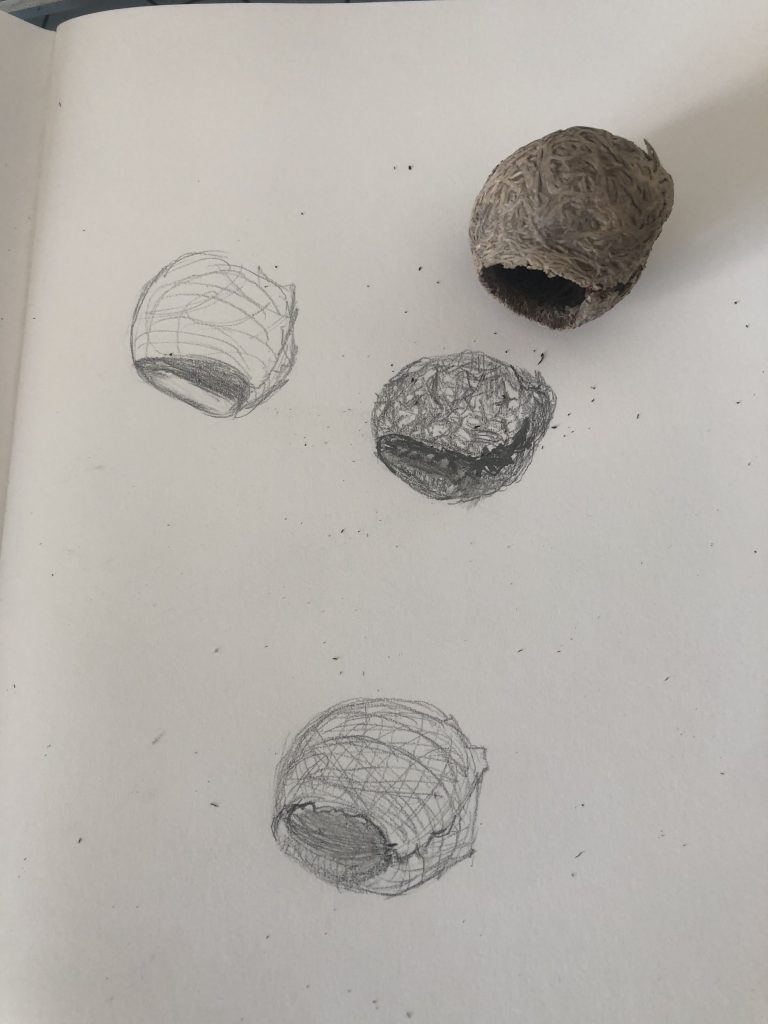

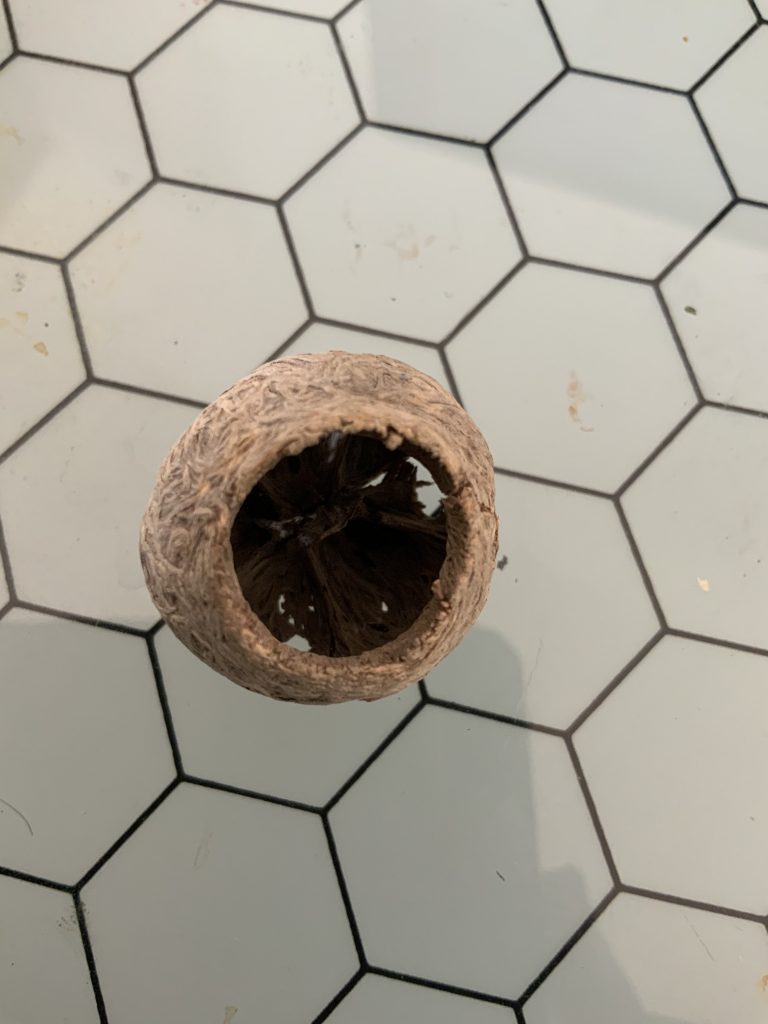
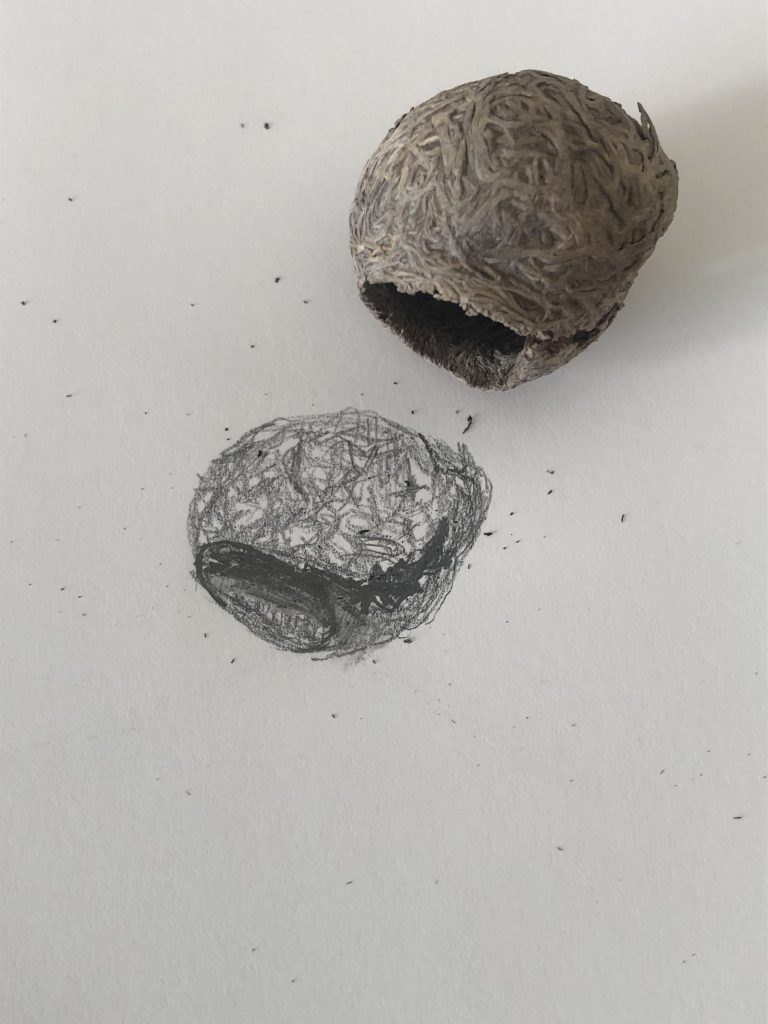
I will Observe and record the same group of objects from a number of viewpoints: left, right,
above, below as well as Develop this further by recording the same group of objects in a variety of light conditions. For example; if your table is lit by natural light make studies at various times of the day or
use a table lamp to introduce directed artificial light. Consider your use of line, tone and
composition.

REFLECTION
This exercise is designed to develop your familiarity with and understanding of the material
qualities and spatial relationships that exist on the table. How well, and in what ways, do your
studies reflect these and how could you develop these going forward; is there a particular focus
that emerges through your studies? Record your reflections in your learning log/blog
I consider different drawing materials first: charcoal, soft pastels, water and gypsum and graphite. I like the tactility of making quick sketches around form and colour. I see possibilities of exploiting and approaching negative shapes, compositions and textures of the objects in these mediums.
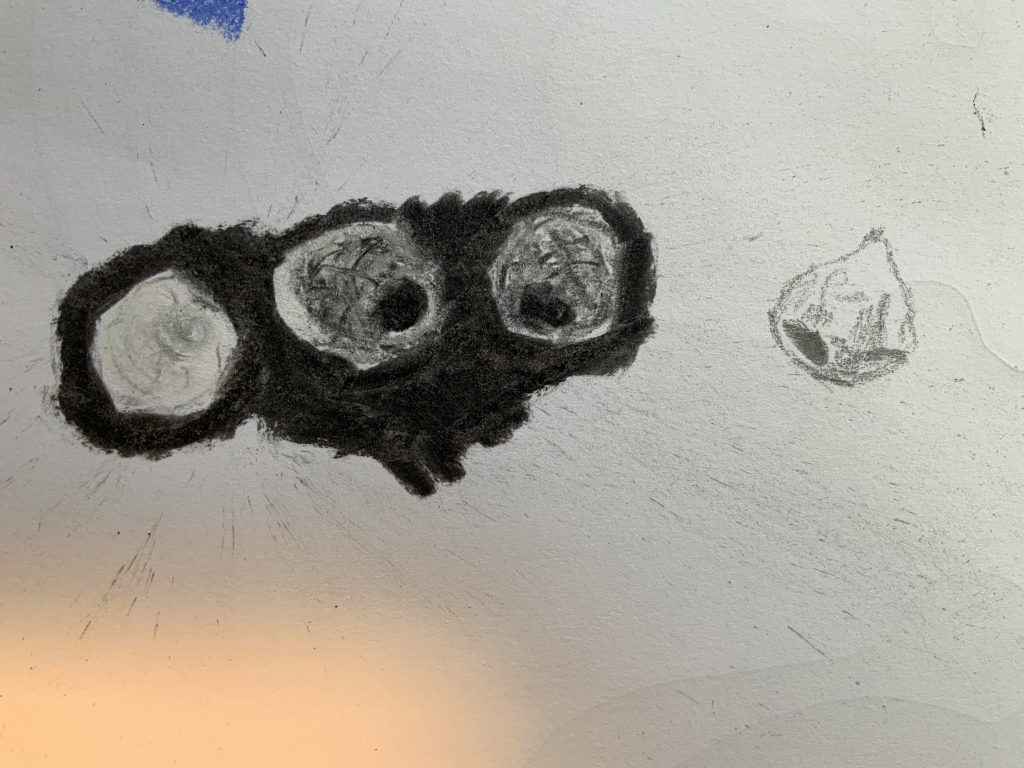



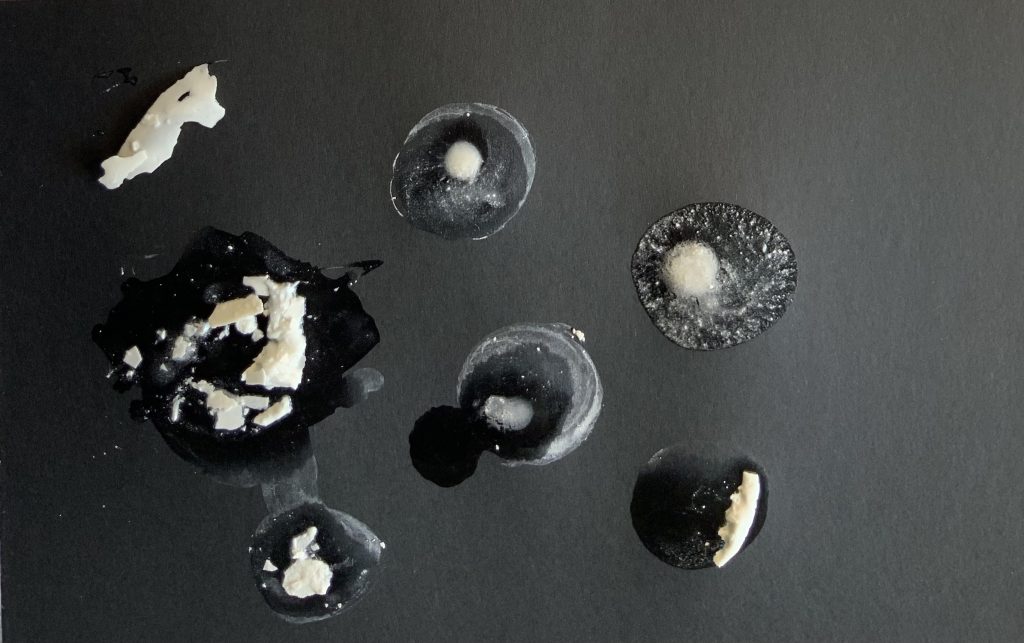
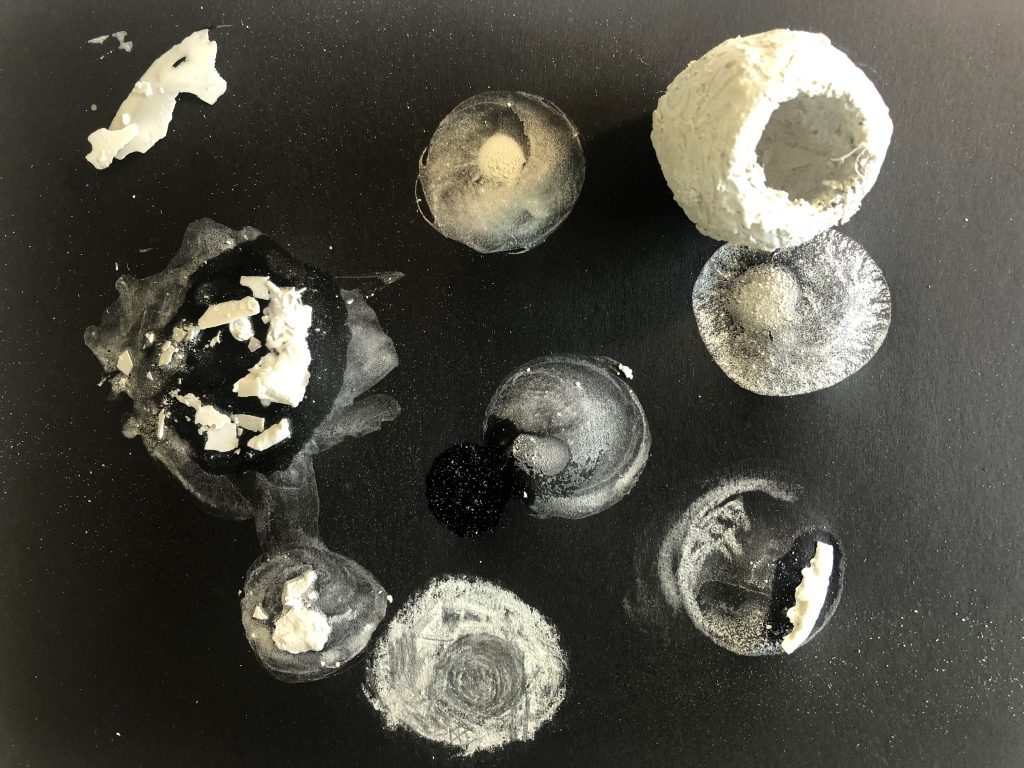
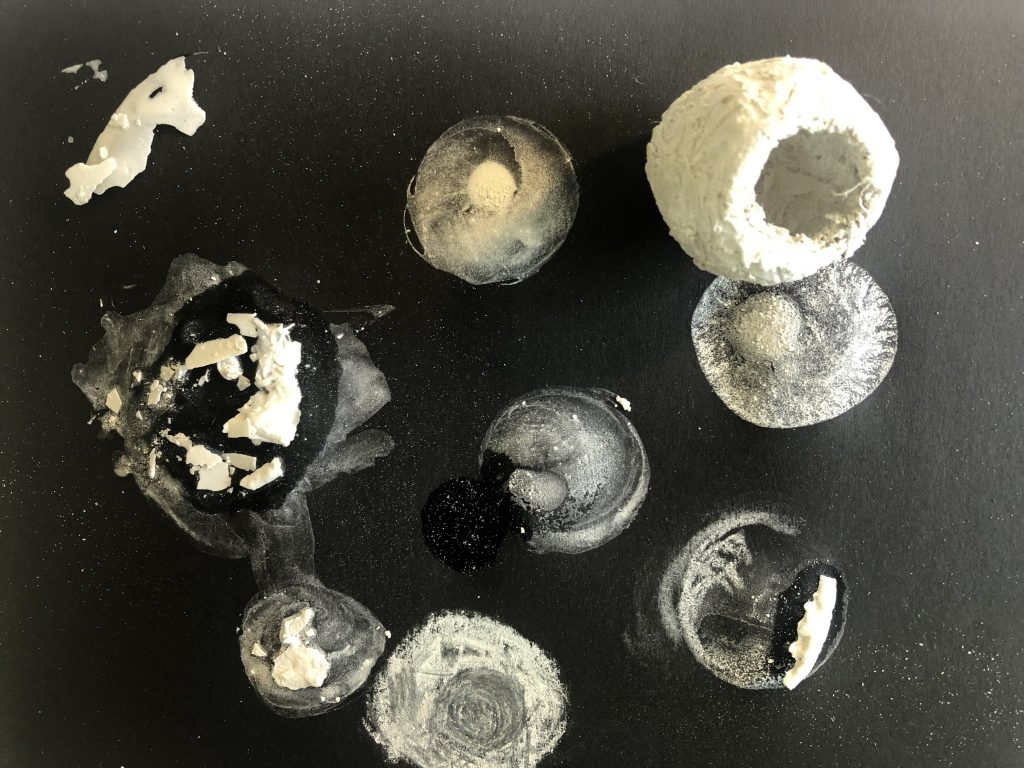
I love the mark making created by my wetted fingers: gypsum and water.
I see them as traces of material imprinting shape and form, as well as a texture onto the black paper. I also became intrigued with the nest like weaving patterns I observed on the seed and with aid of some small tools, I went back to the made objects to refine them more. I feel the object indicated the medium that would suit it best. I enjoyed making the 3d objects by observing the form and texture, as well as considering different compositions of how these forms could be placed together.
Did I experience a heightening of my observational skills? I am sure my way of looking at objects, due to moving around them and trying to see them from different angles showed me how tone, line and composition play a role when drawing/painting/sculpting those objects. I am more aware of the materials I can use to work with. By making one object with clay I felt I had to use my observational skills in terms of measurement, form, textures, volume as well as how the material talked to the object, differently as when drawing or painting it.
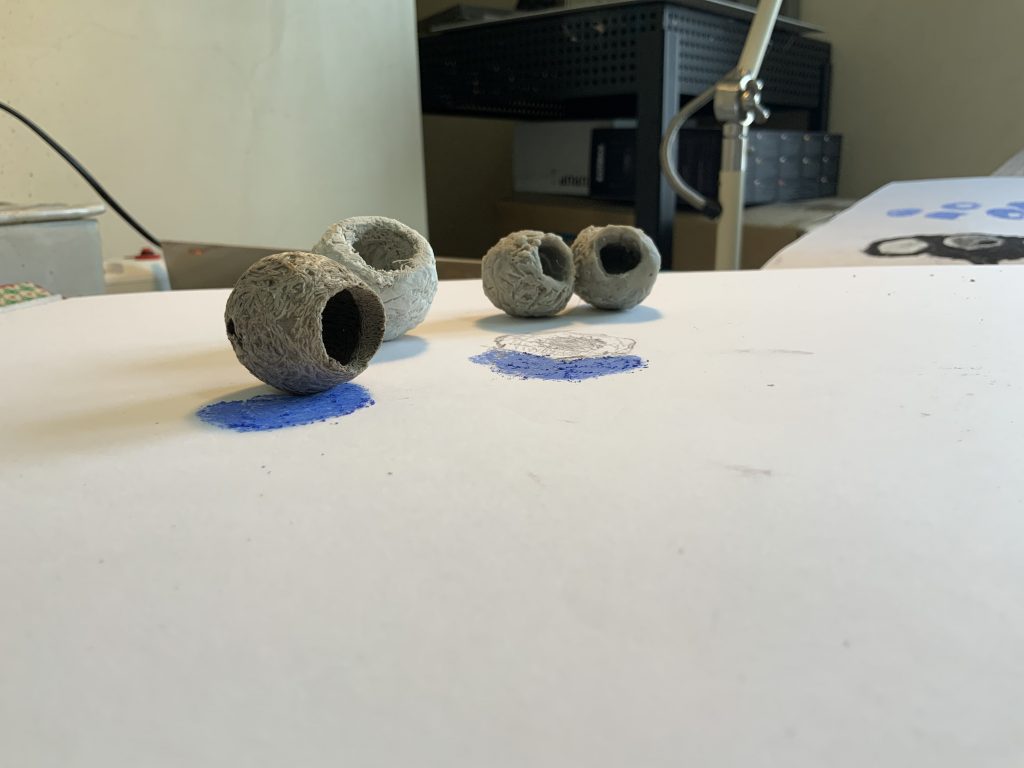
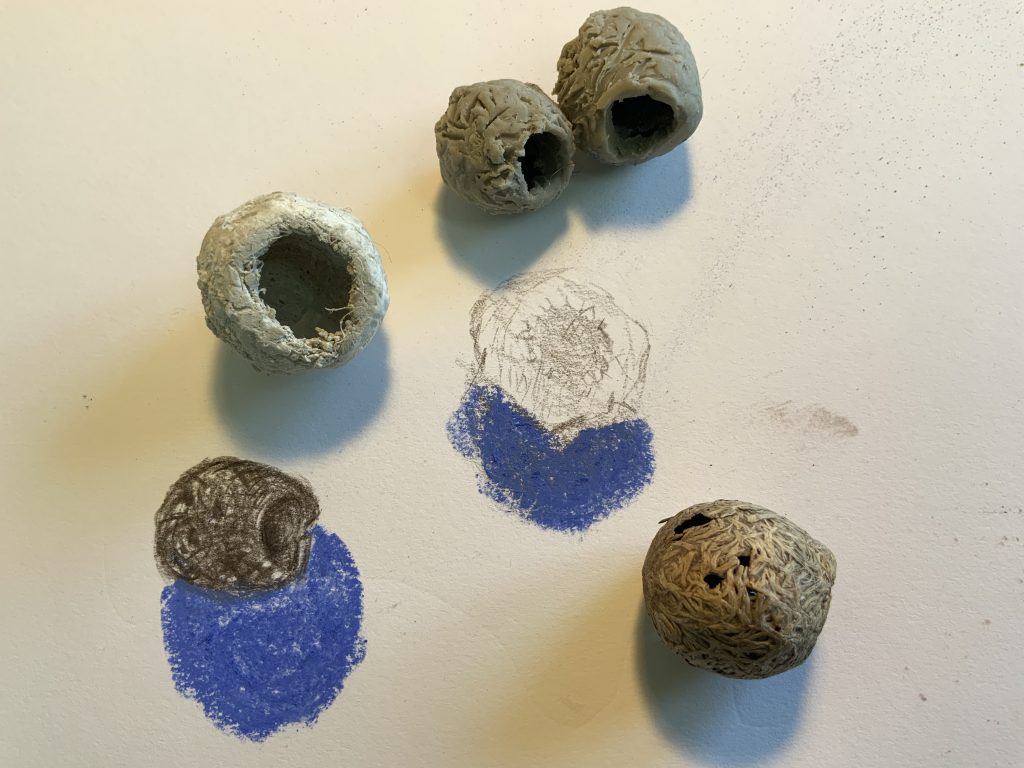
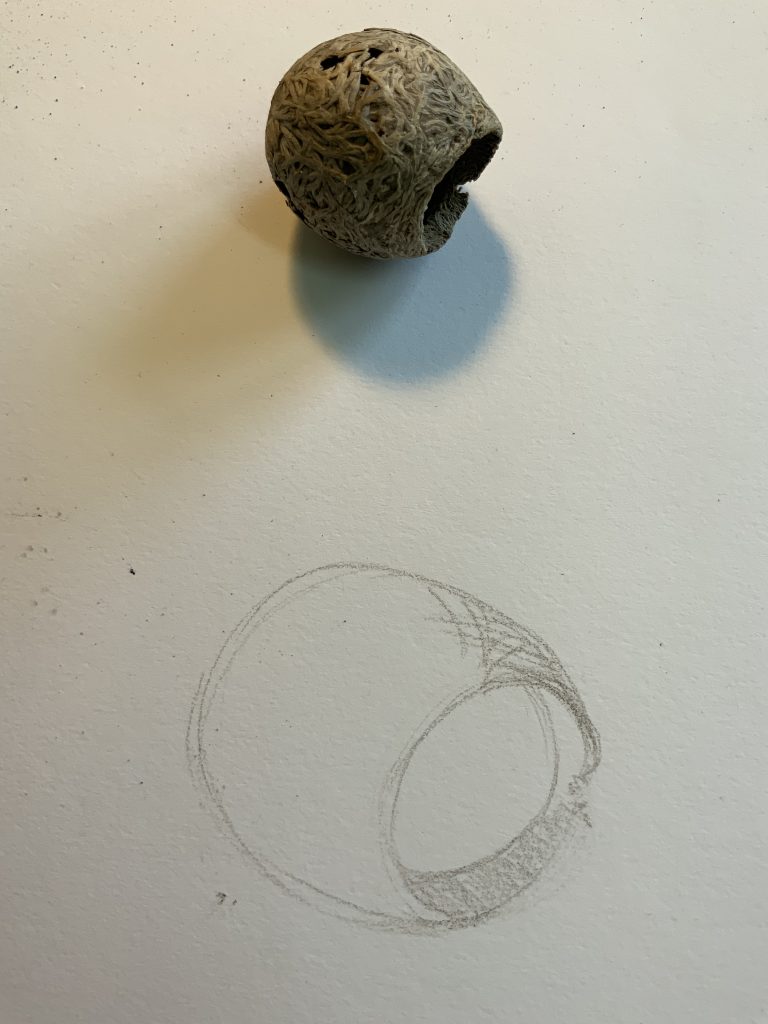
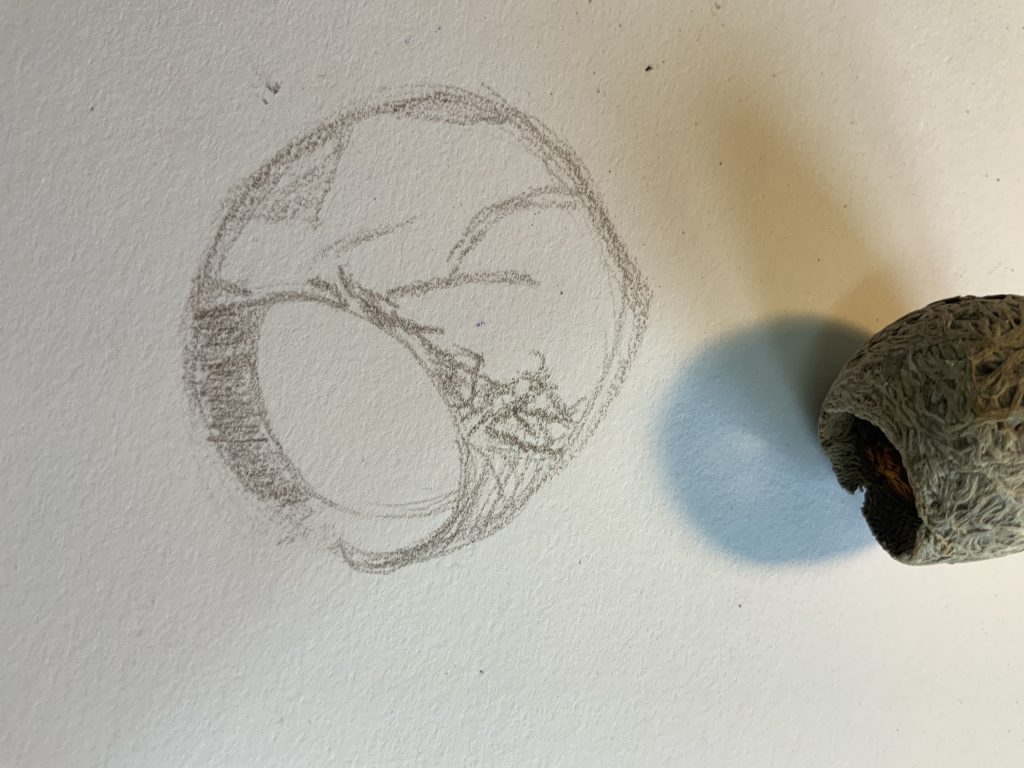
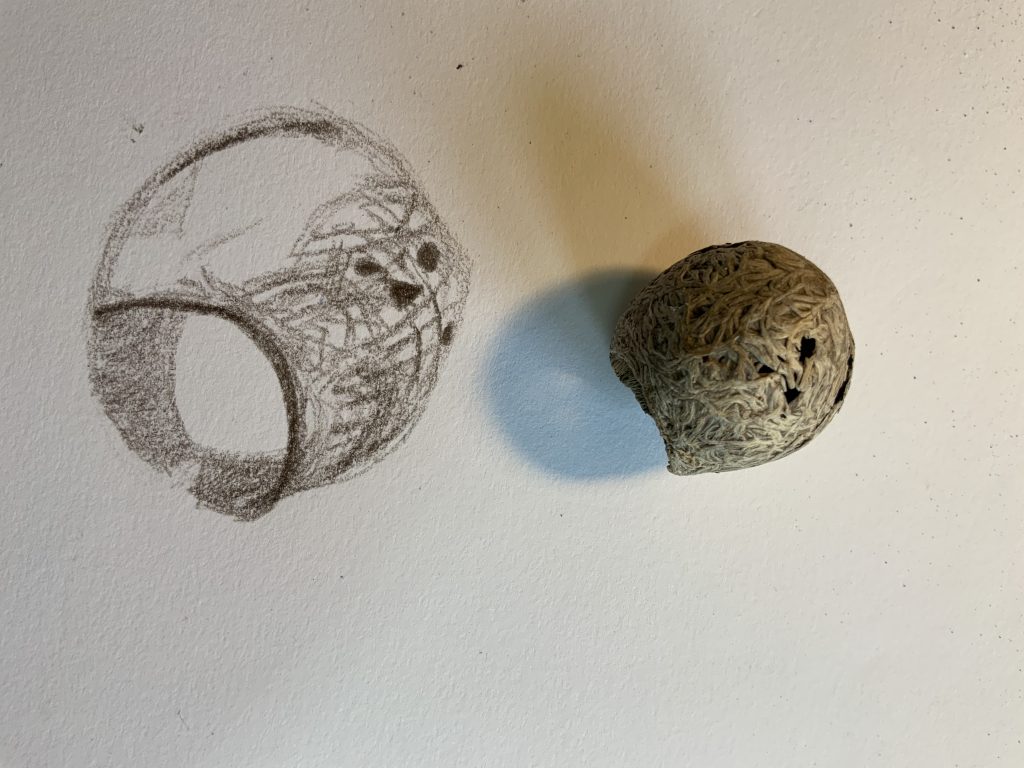
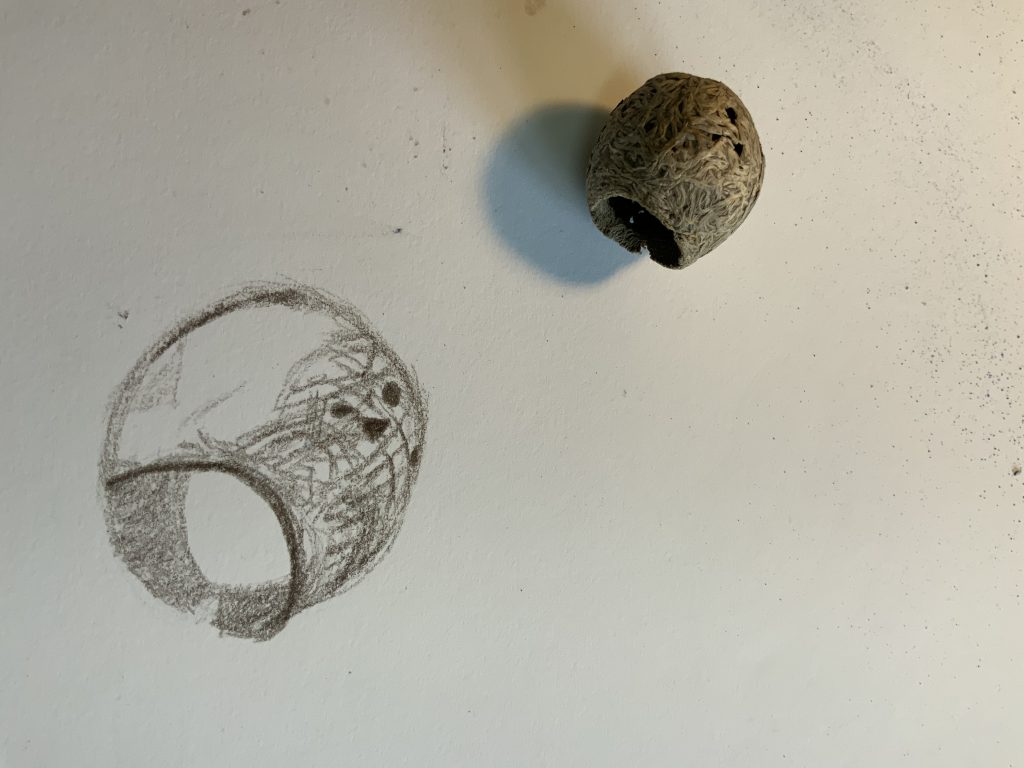
I looked at other things I made with folded and cut paper.
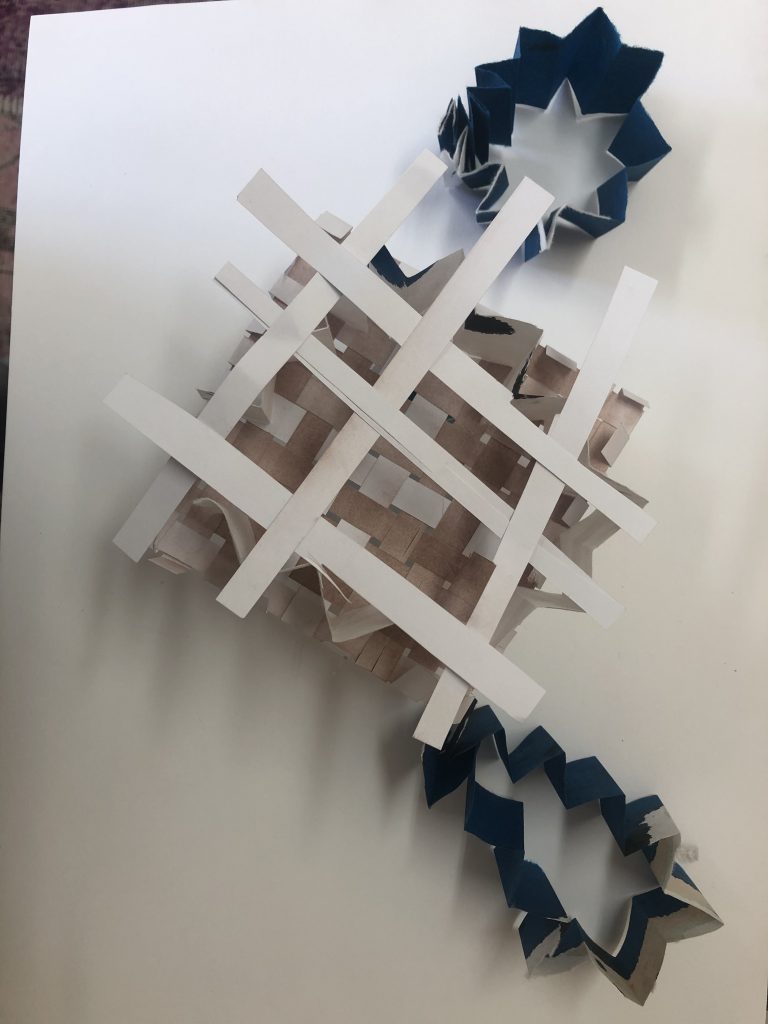
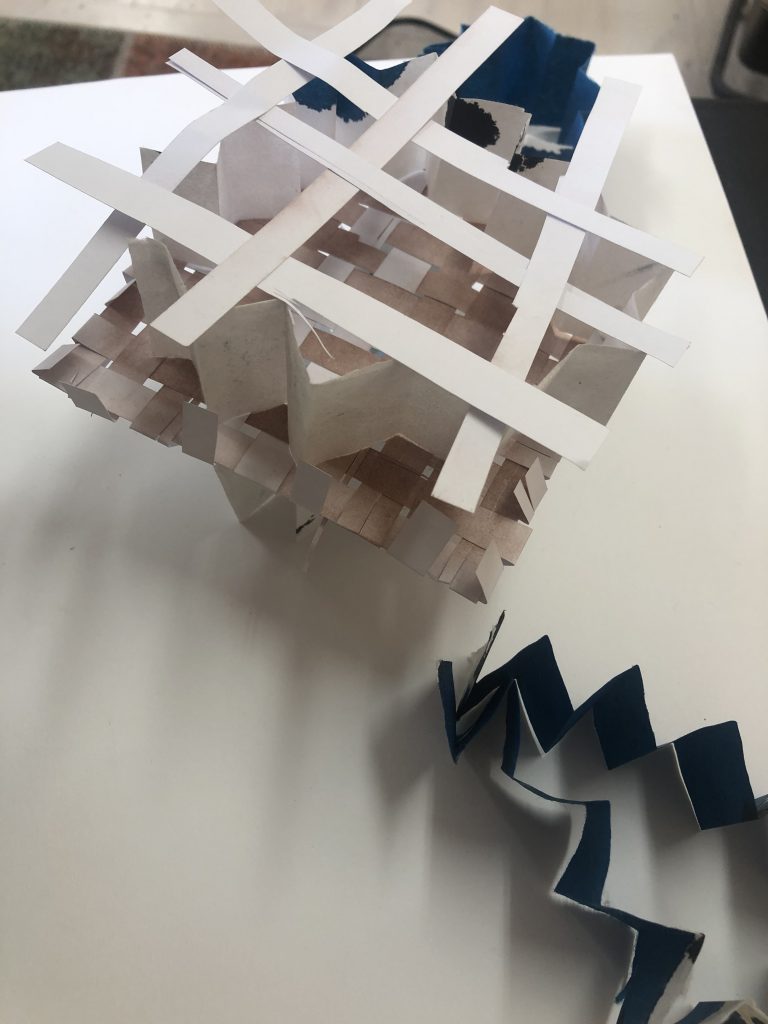

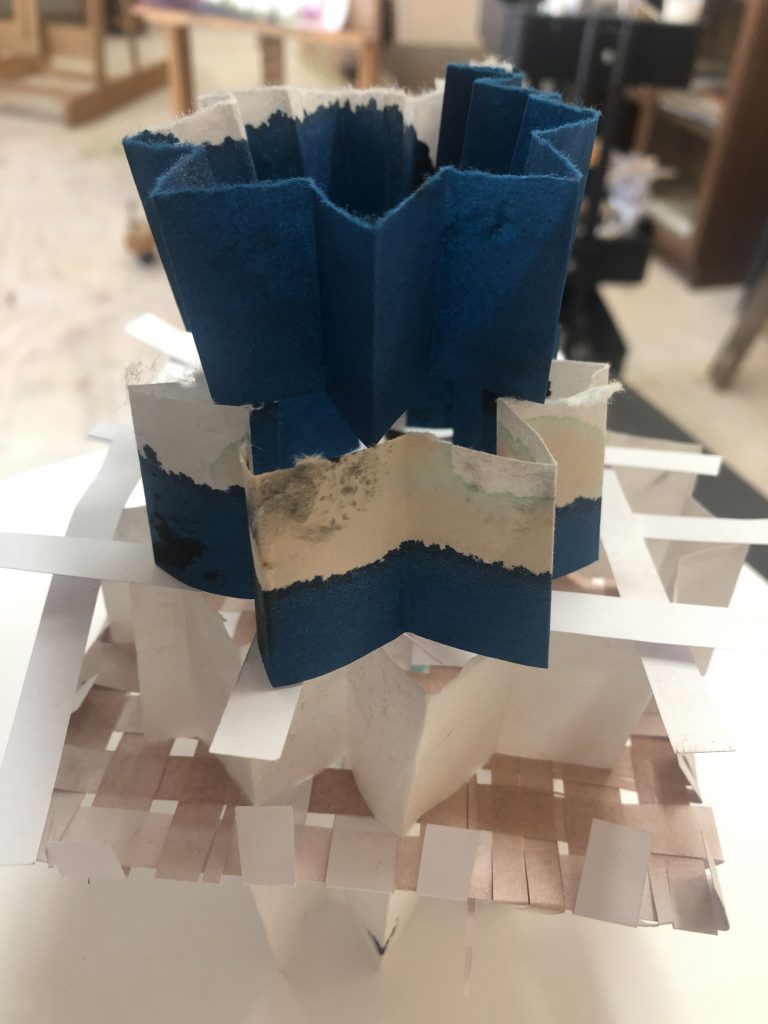
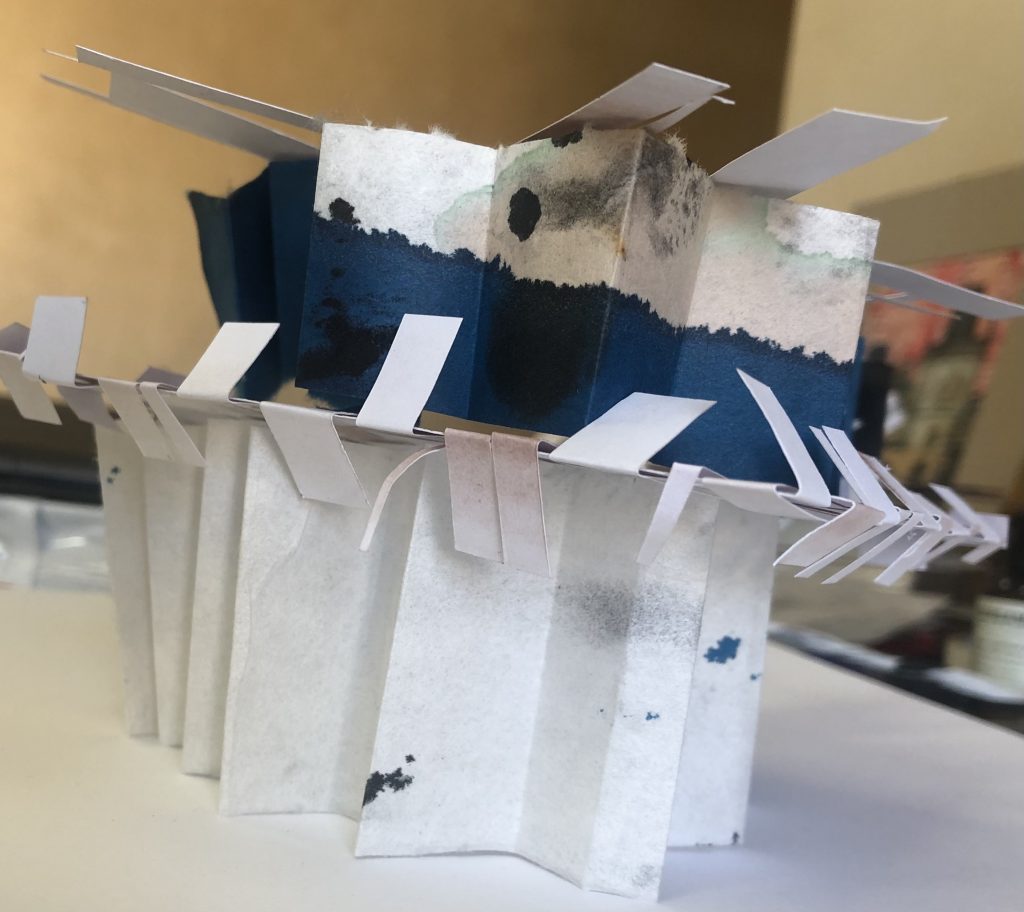
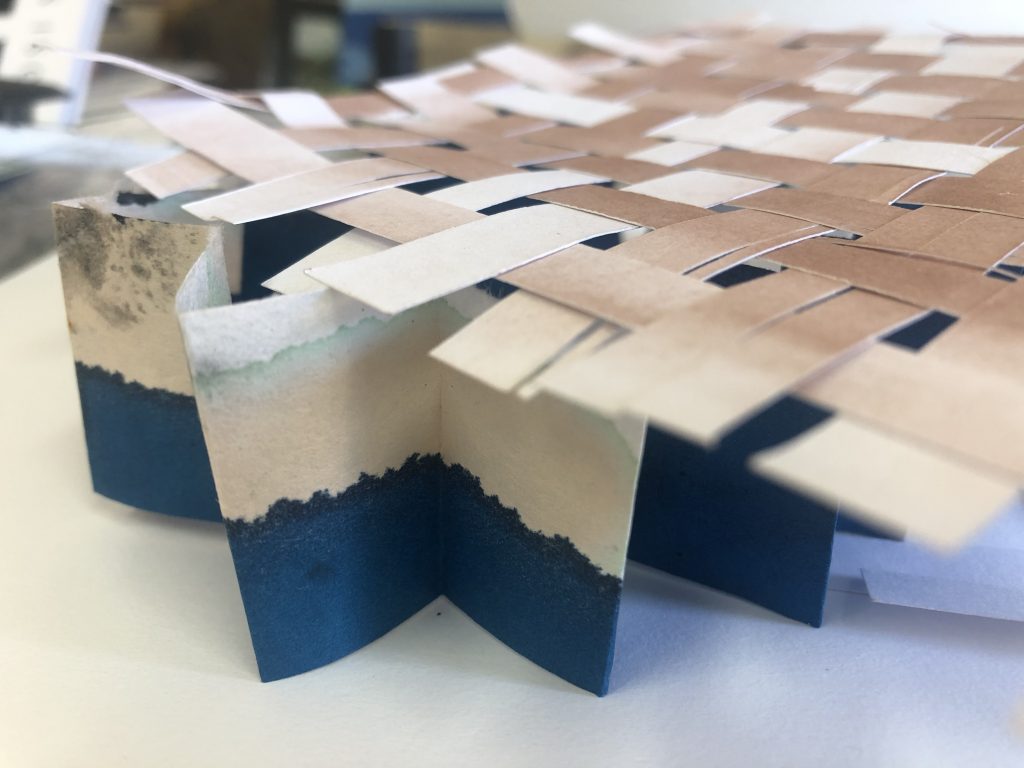
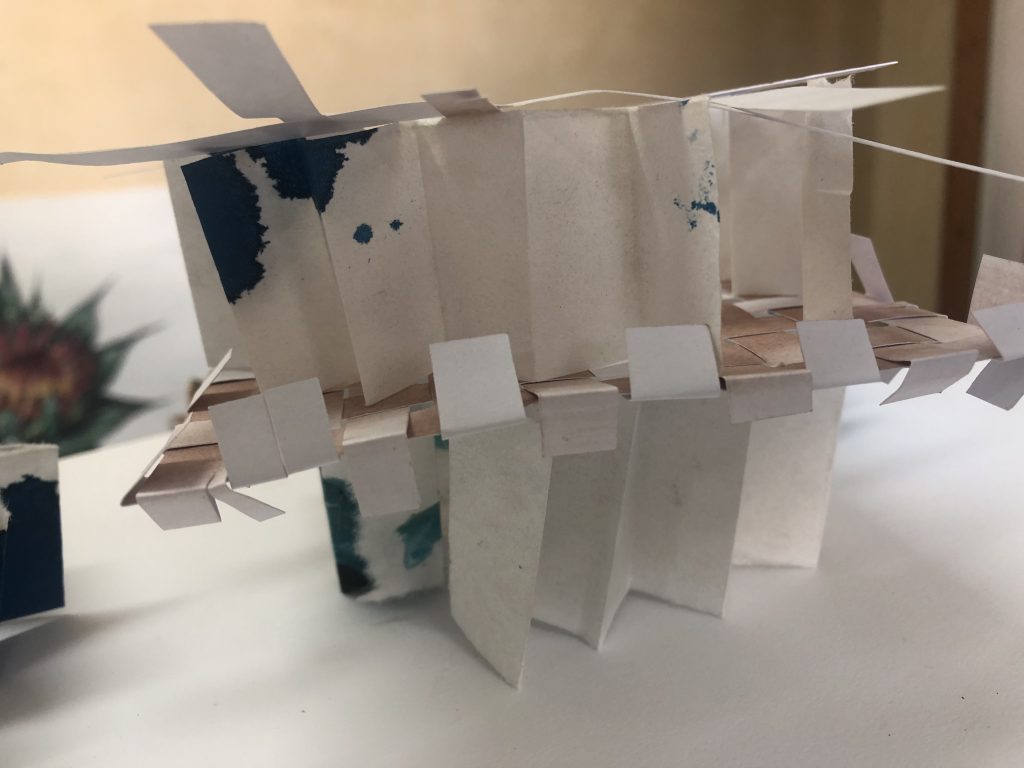
The more I look, I see potential to disrupt the work, to intervene in the work, to be performative with the work….to make an installation.
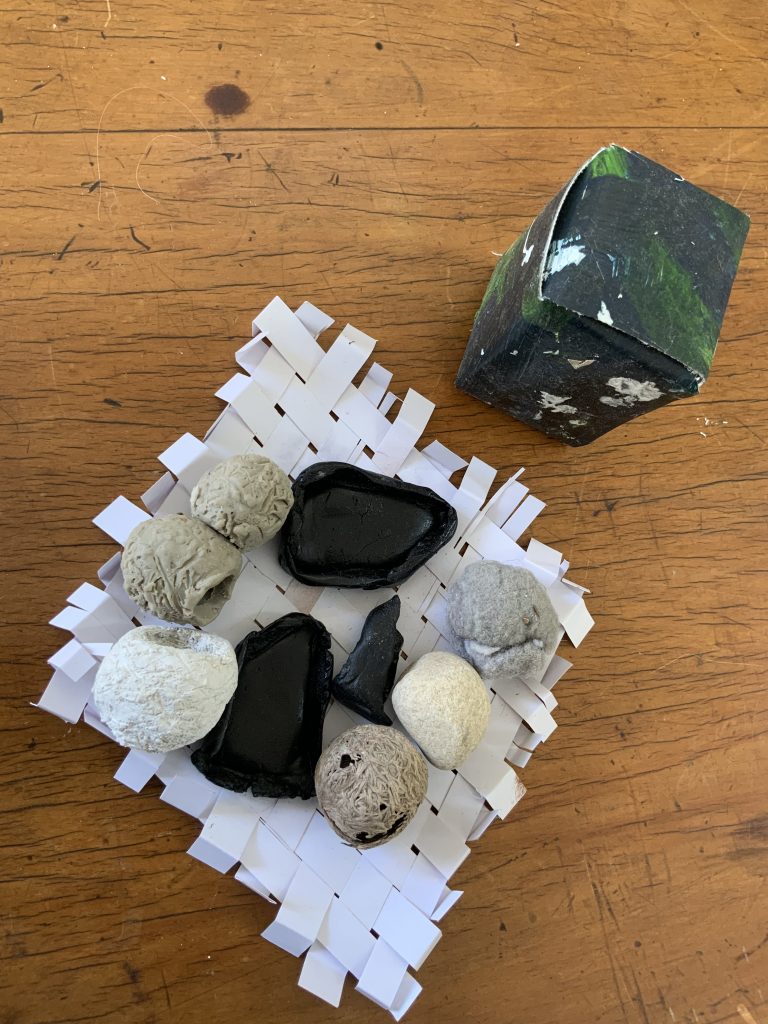
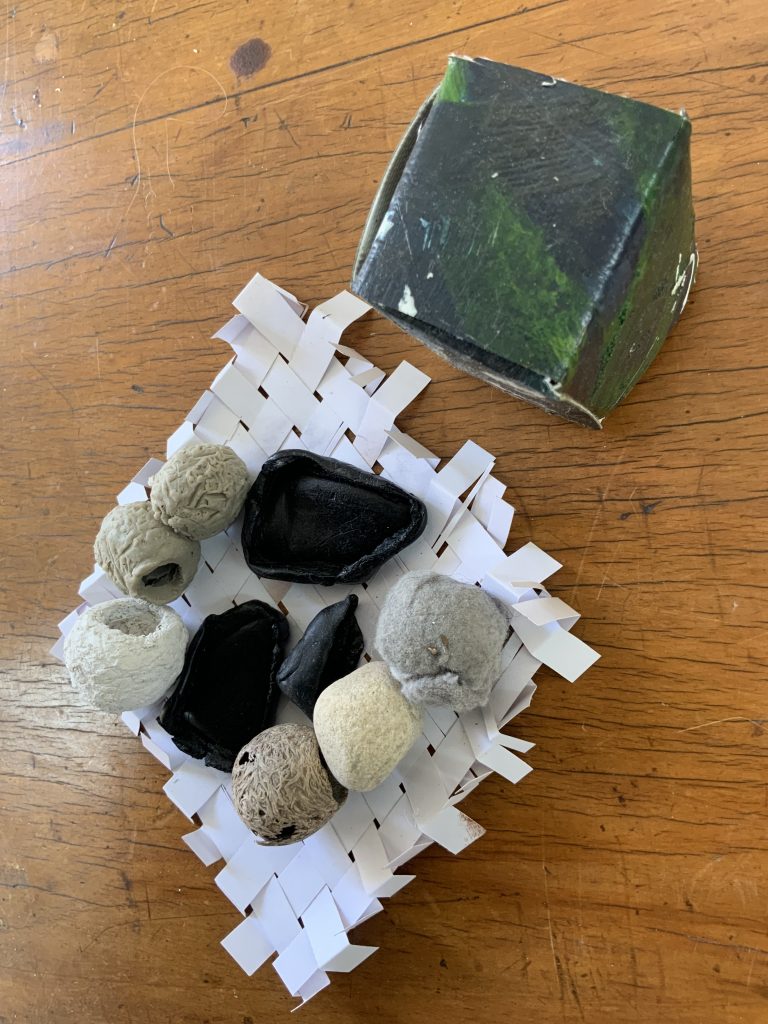
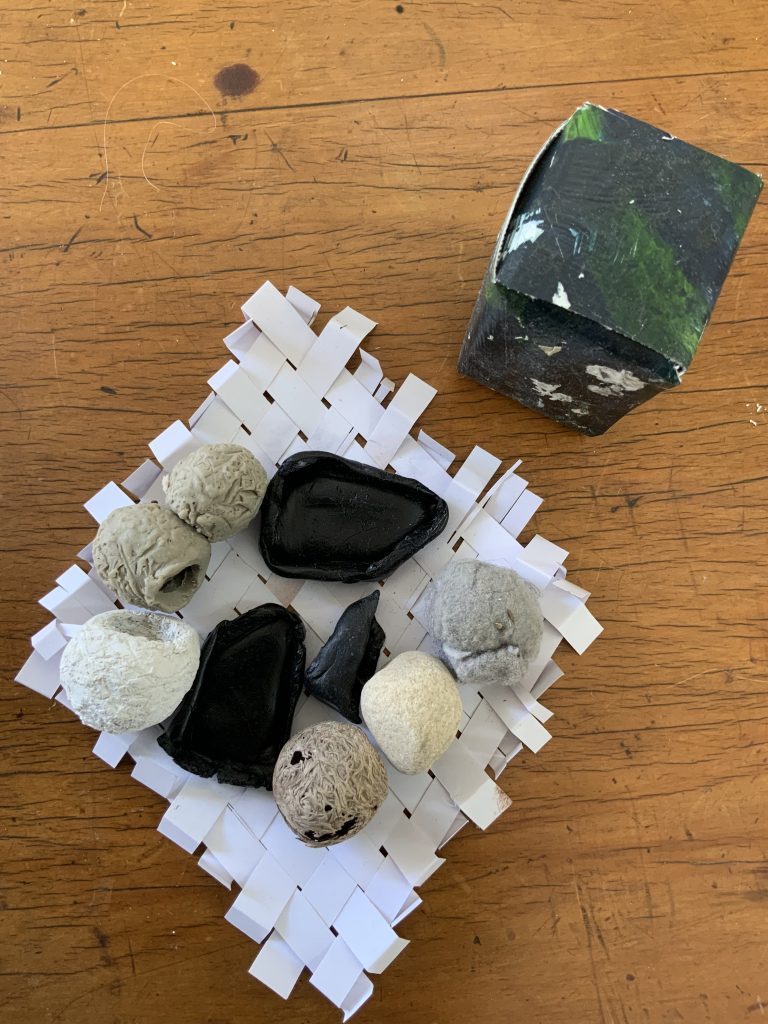
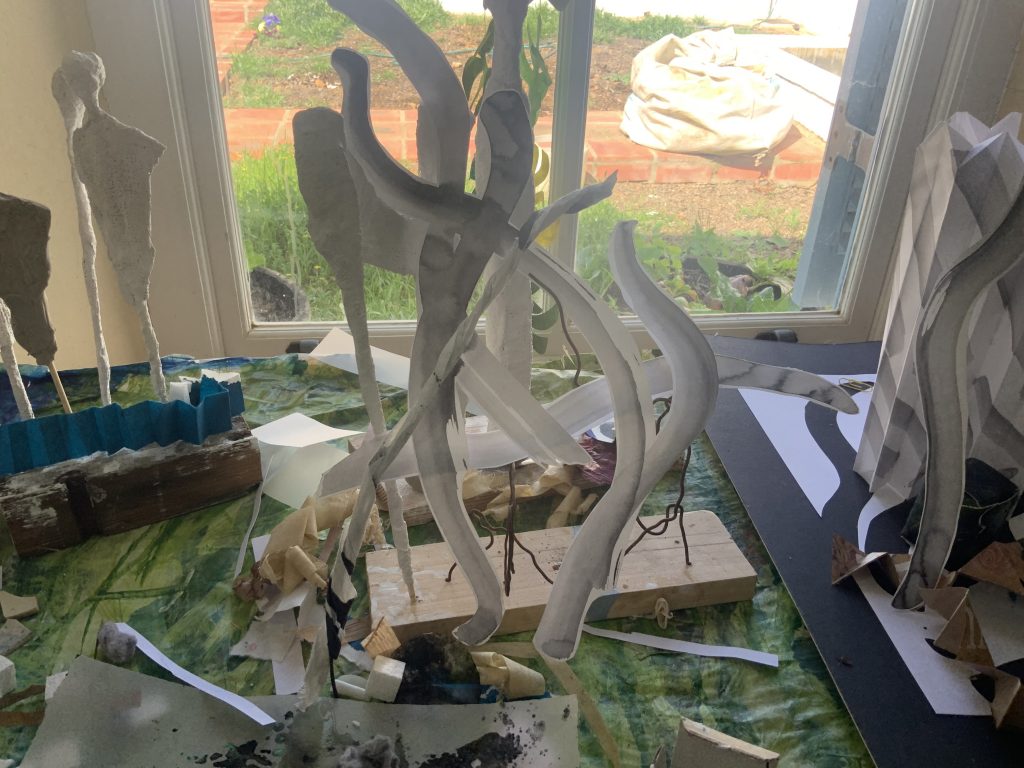
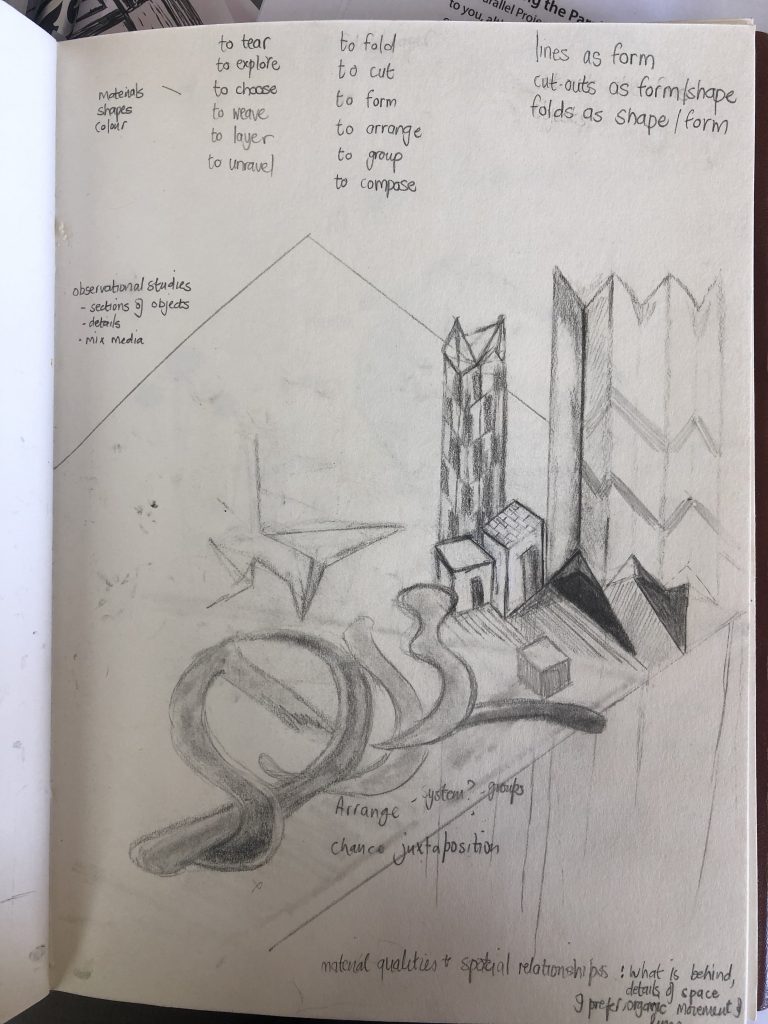
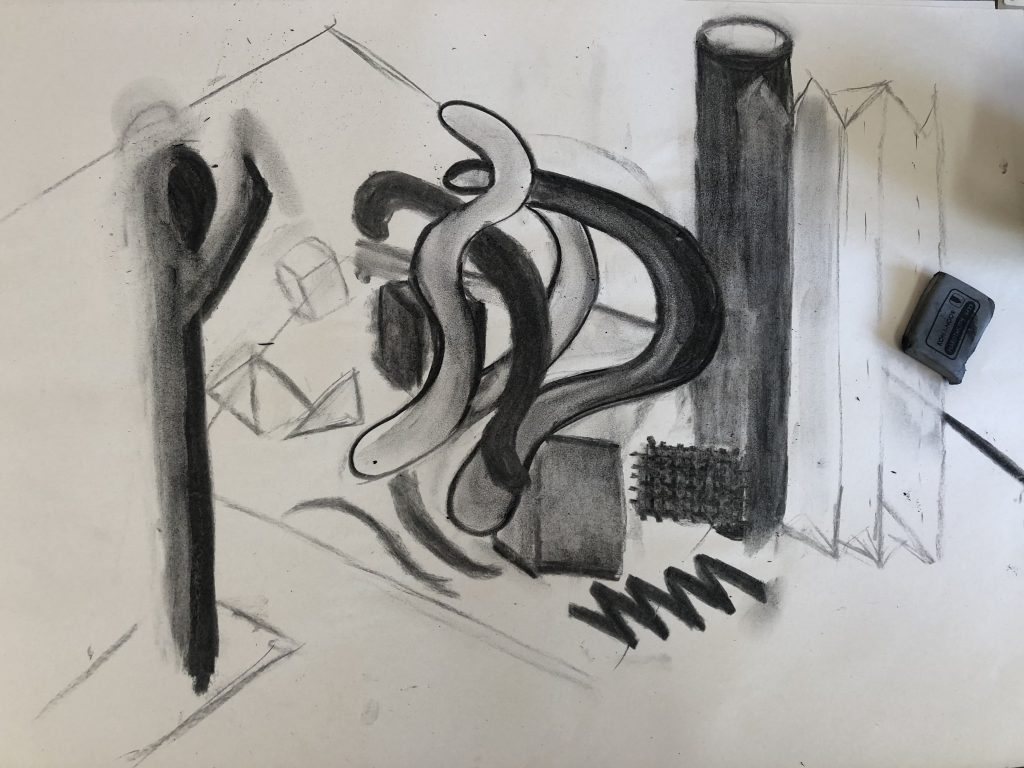
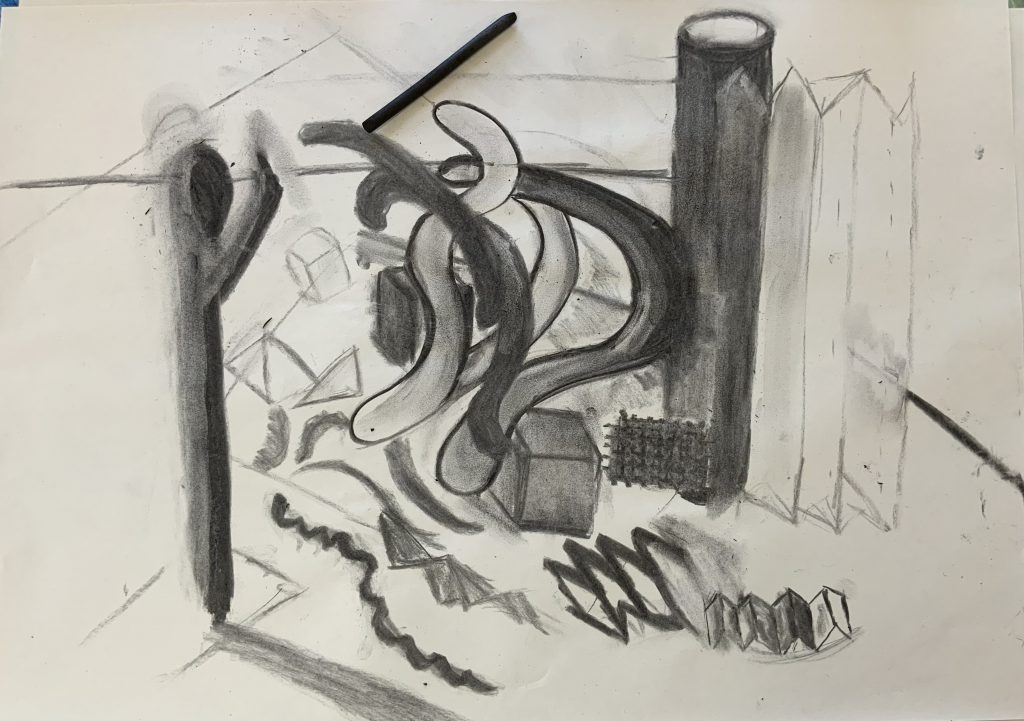
I continued to change the view and think of the drawing lines I made cutouts of, as 3-dimensional objects in space, and how form can change over time. Drawing with charcoal and soft pastels on 48gsm newsprint paper makes me aware of the temporality of these forms…..I can smear and erase, hide and reveal. More organic forms show my preference when drawing to explore lines and form. The softness of the drawing material reminds me of the wet plaster of Paris rolls I used in my hands to make the forms. The grey as background gives the shapes and forms a space to perform in.
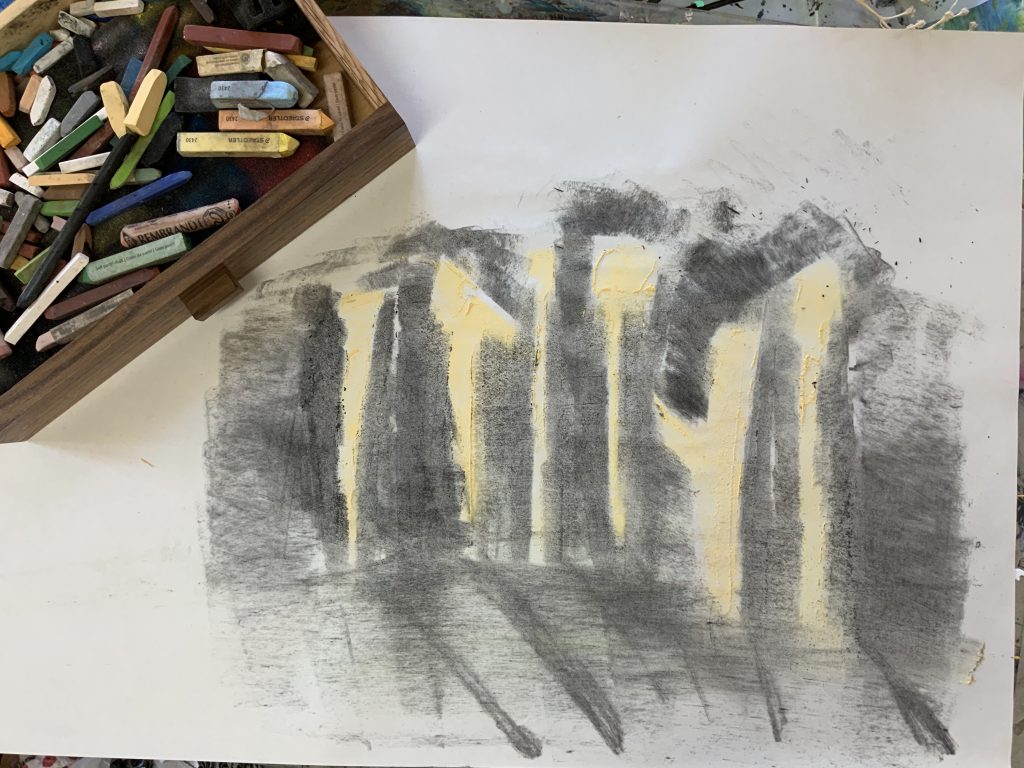
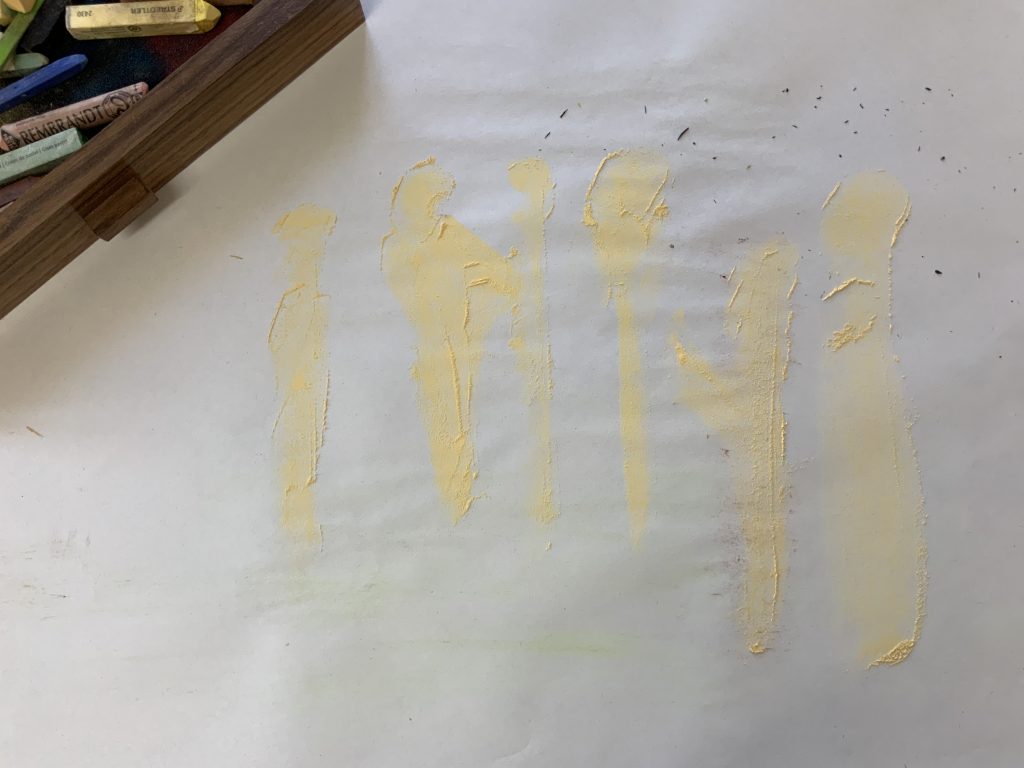
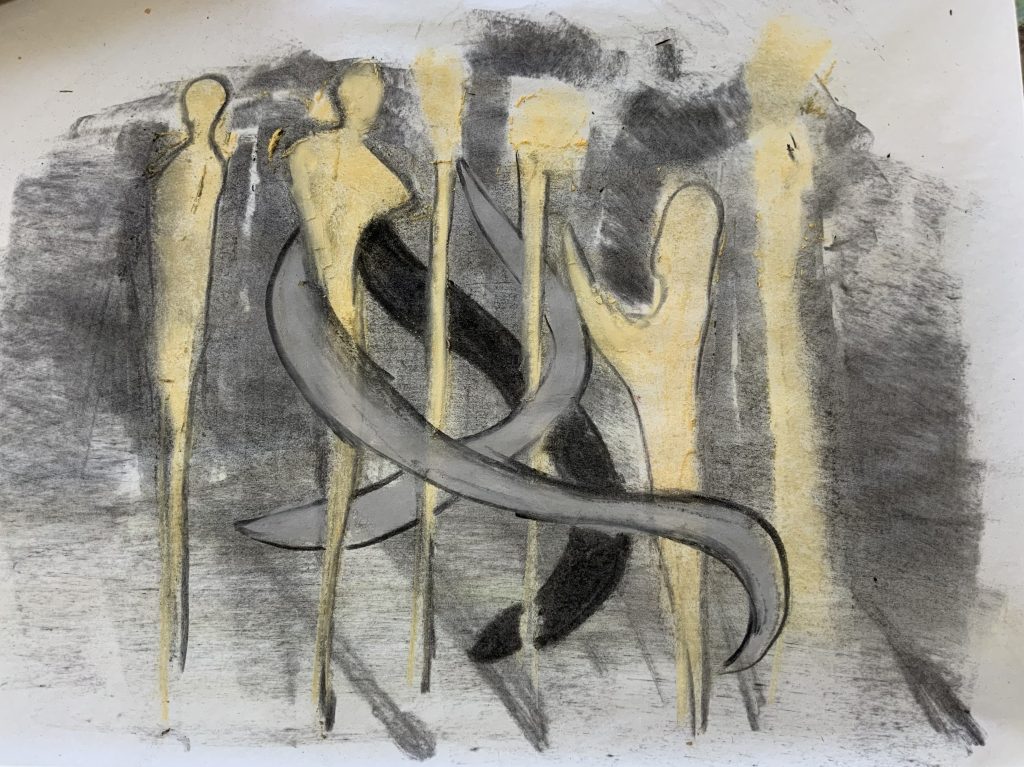
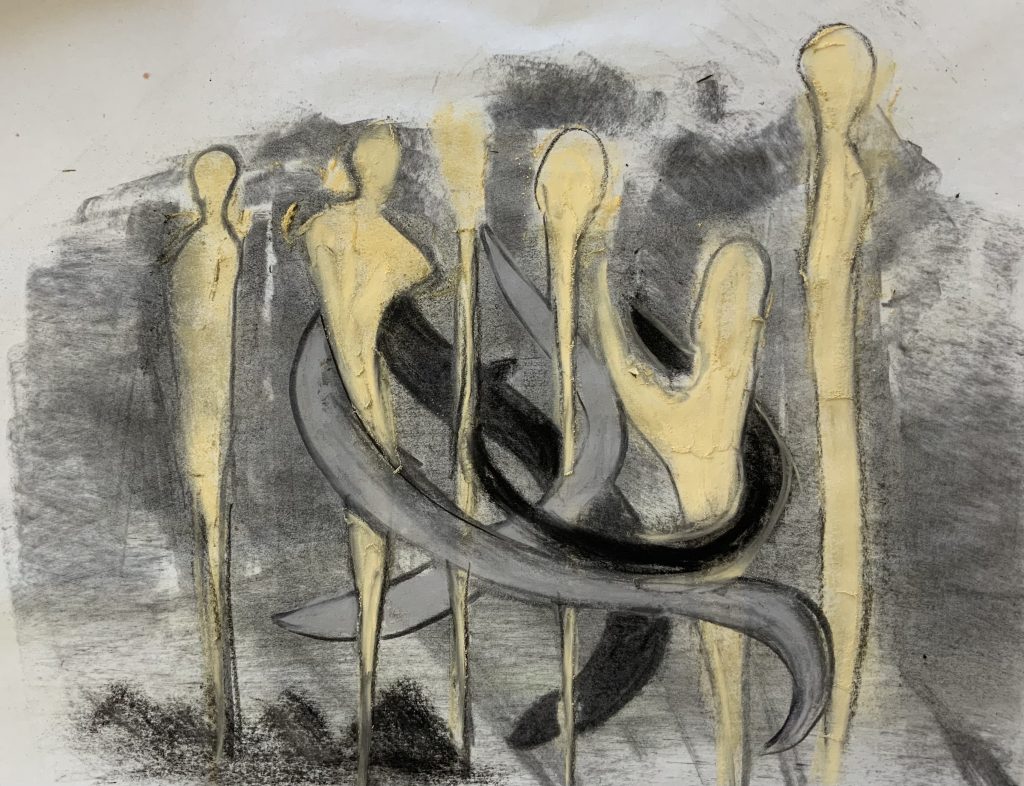

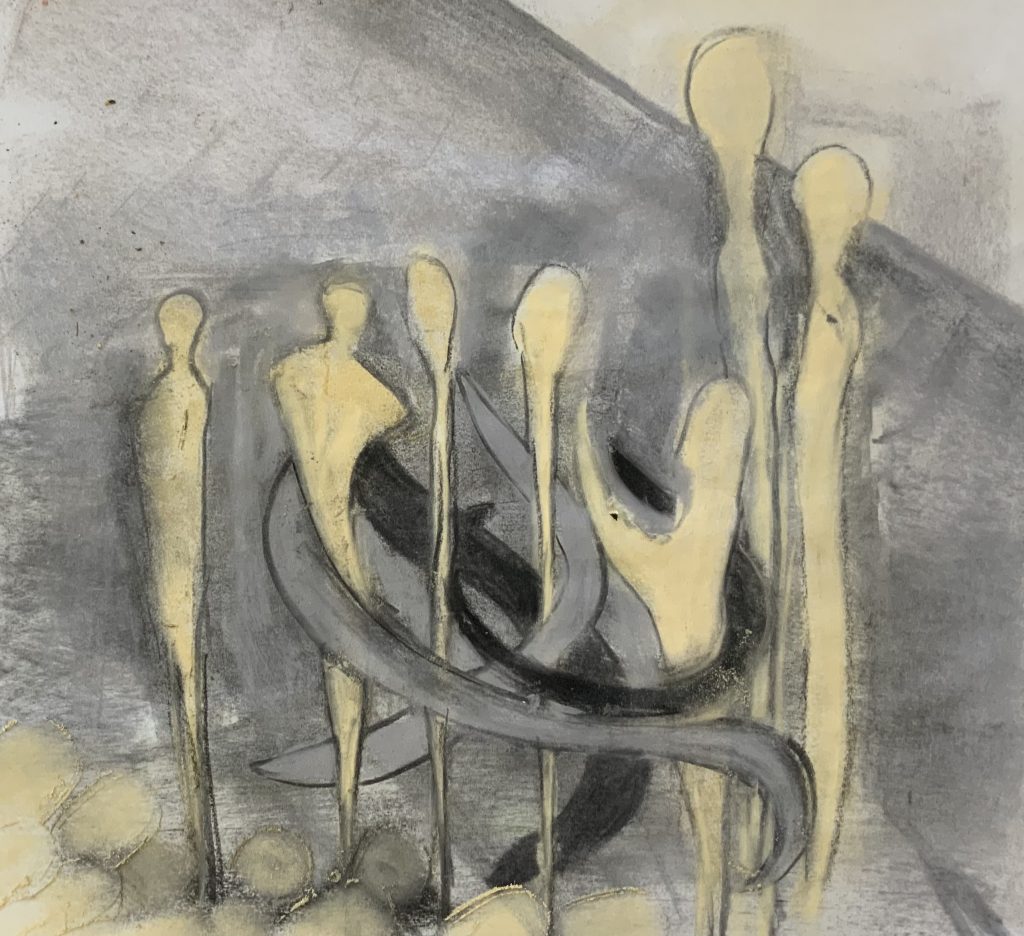
Looking at the pottery fragments, here I sculpt and paint and carve onto the little pieces. I can imagine making a collection with the blue and brown poeces I have in my found collection. i like the play of black and with with the clay material and paint.
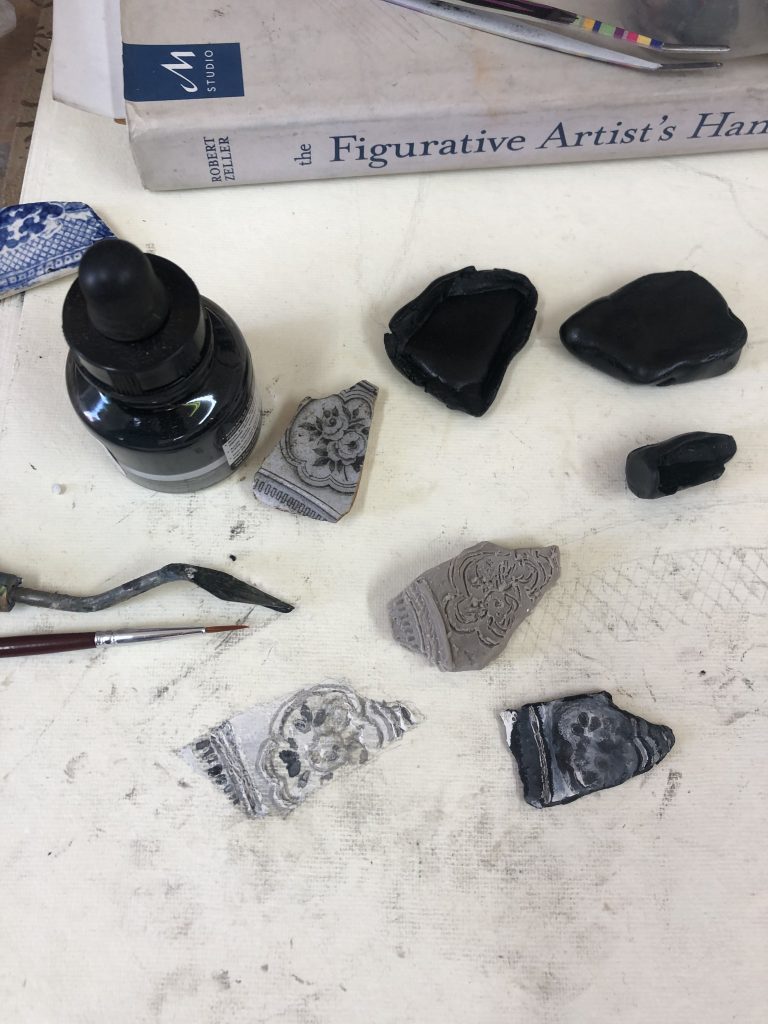
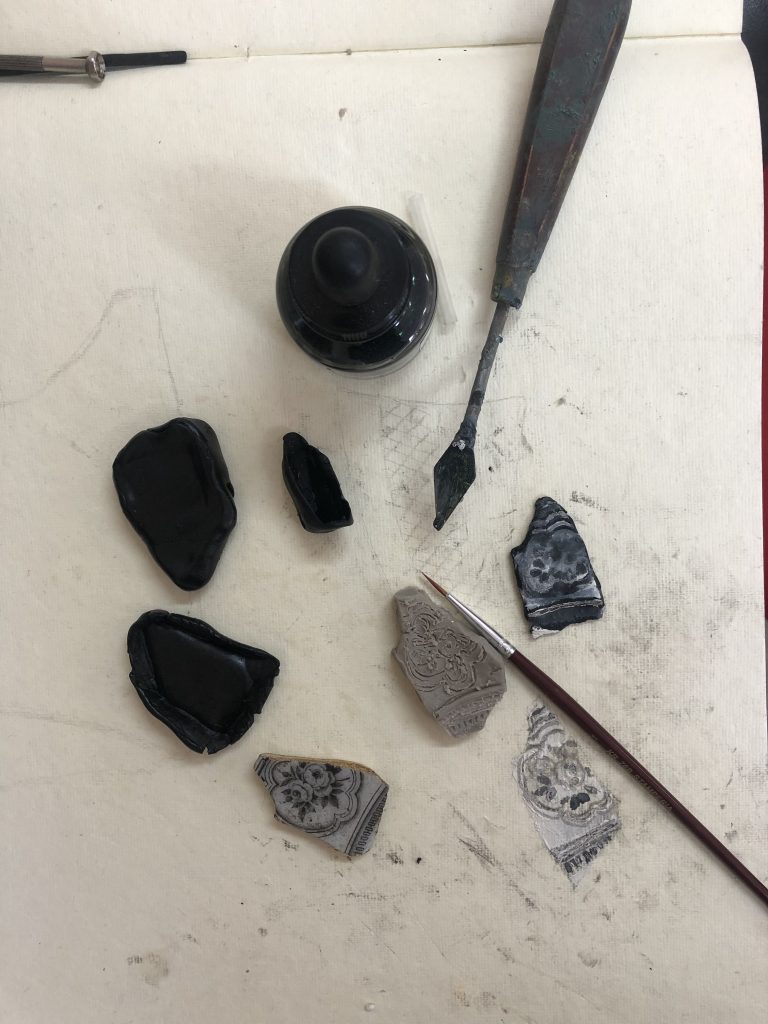
I use the cut put template to draw the lines with ink in a sketchbook. Then I draw the figures and play with light and shadow to create the composition. The grouping of the objects and the lines make for a simple composition and I decide not to focus on the table.
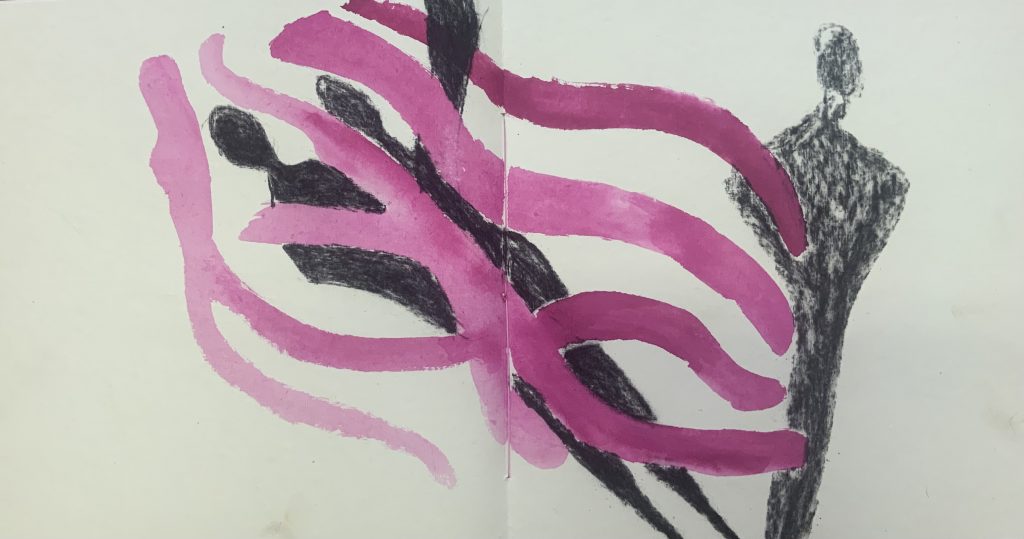


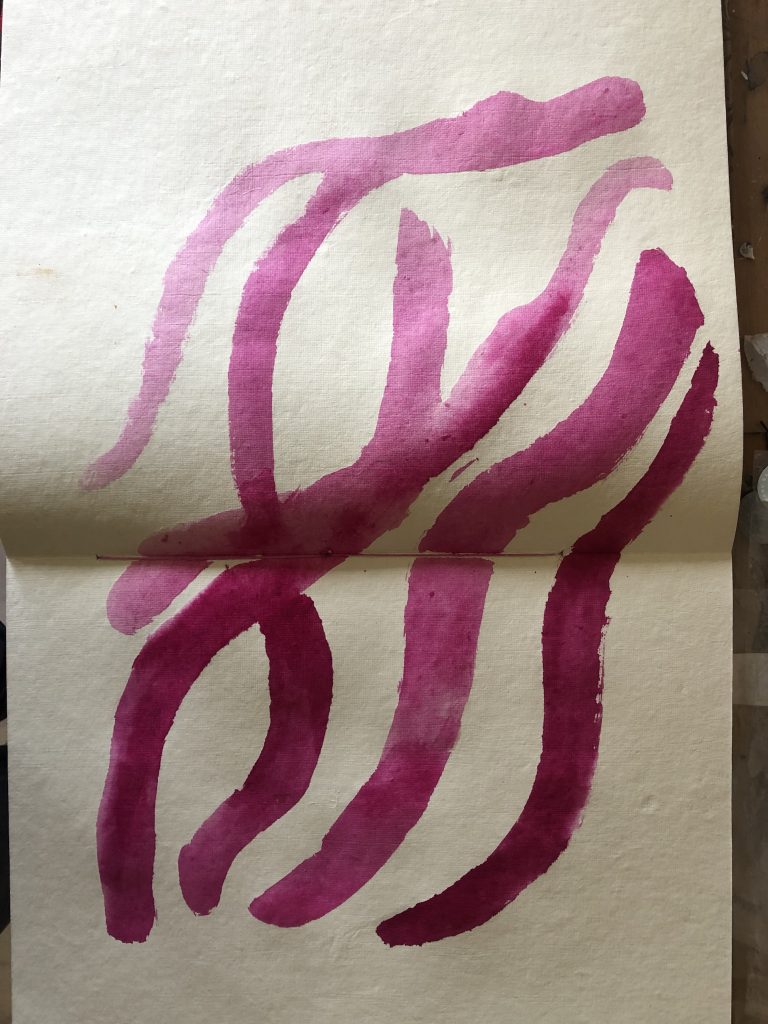
I am looking at these made objects every day whilst in the studio and started adding and or changing the layout on the table. I decide after a day or so to add the paper cutout lines to the painting, like a collage, but it also reminds me of weaving. In this way I see the work come together as a more coherent piece, and can visualise it better as a 3 d form as well.
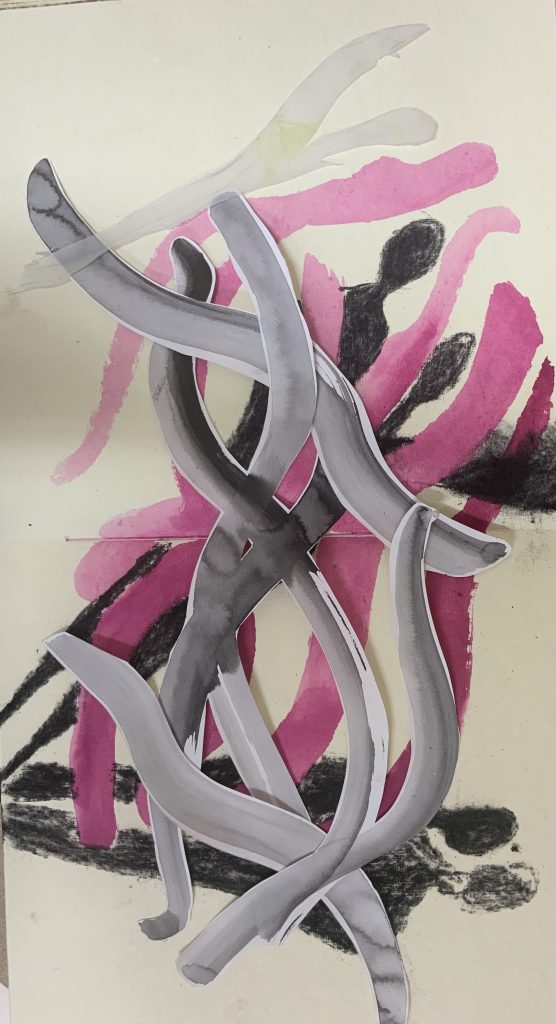
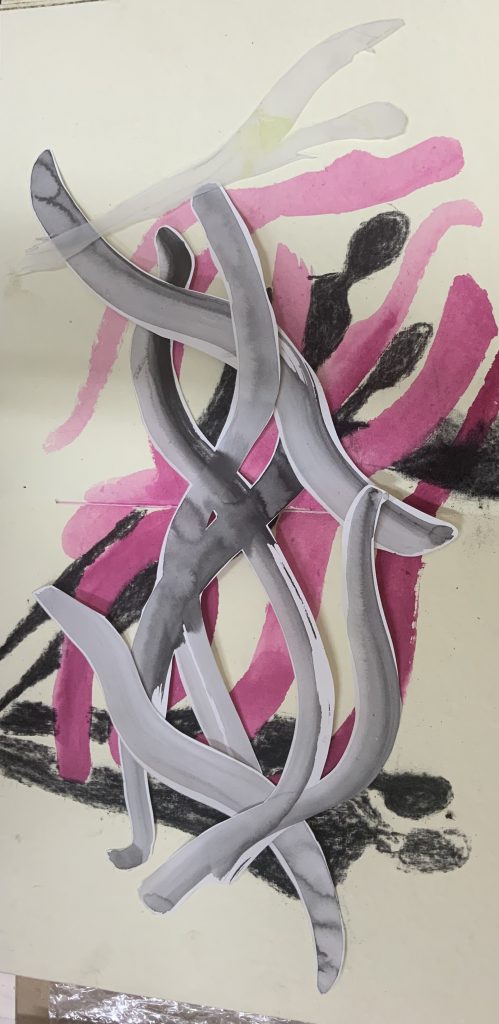
REFLECTION
I become intensly involved in the making of more objects on the table and experimenting with polystyrene, fixative types to create objects. I tend to forget that I have to focus on my observational skills for this exercise, but feel the process of making is evolving by the day, I am being pushed further into making. I enjoy the materials I work with and start to feel more confident about making objects. I tend to work back into the first project, whilst starting to work on the research questions.
LIST OF ILLUSTRATIONS
Fig. 1
BIBLIOGRAPHY